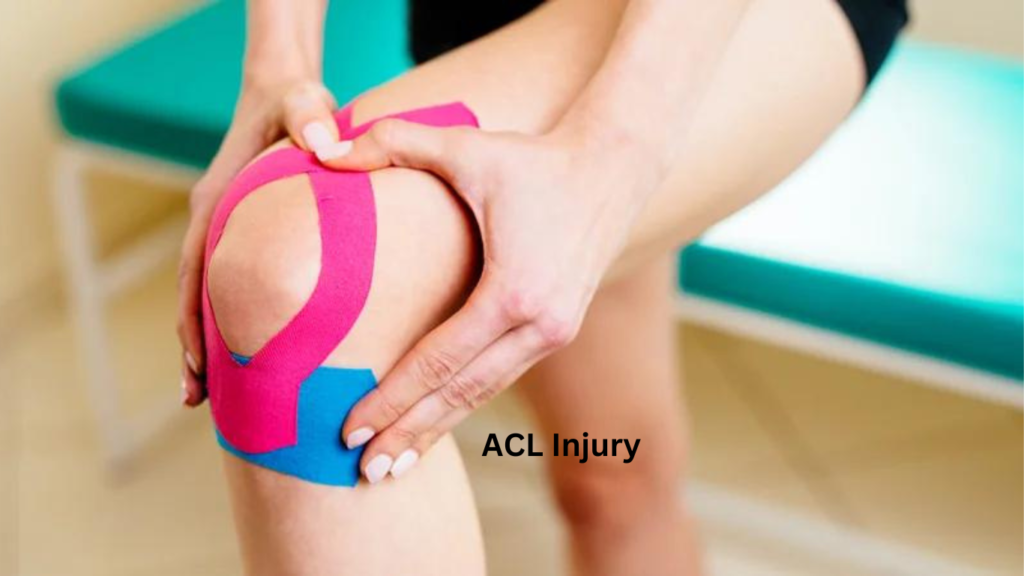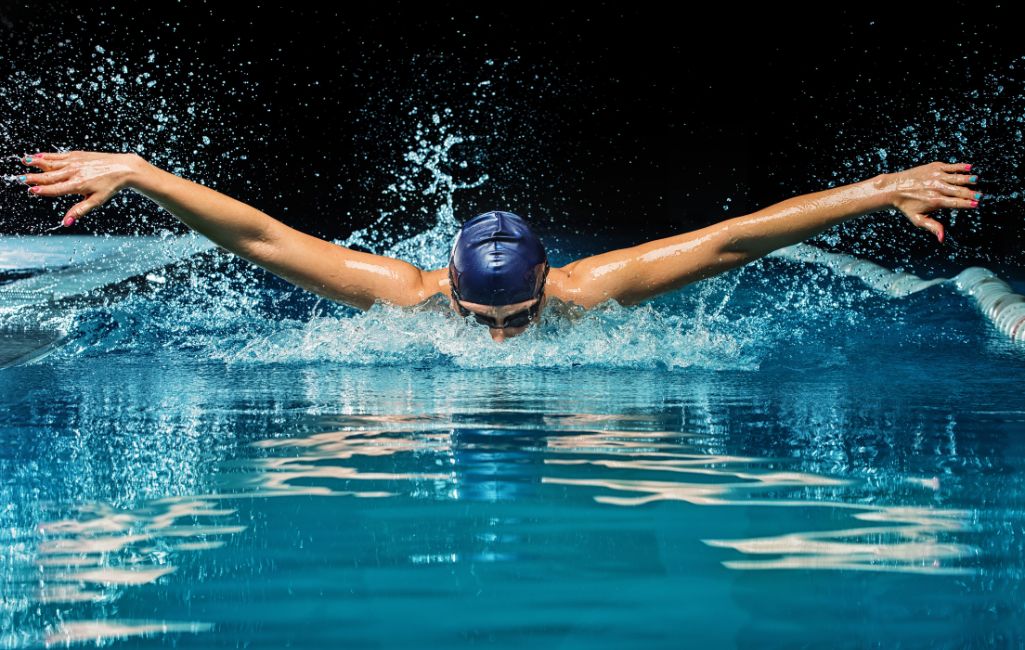Why Acl Injuries Can’t Be Ignored: Serious Consequences.
ACL injuries are serious due to their impact on mobility and stability. These injuries can significantly limit an individual’s ability to perform everyday activities and generally require a lengthy recovery period.
Anterior cruciate ligament (ACL) injuries are common sports injuries that can occur during pivoting or sudden changes of direction. They are most commonly caused by twisting or hyper-extending the knee joint. The ACL connects the thighbone to the shinbone and plays a crucial role in stabilizing the knee joint.
When the ACL is damaged, it can result in instability and reduced mobility. ACL injuries require prompt medical attention and proper rehabilitation to prevent long-term complications such as osteoarthritis and chronic knee pain. In this article, we will explore in detail why ACL injuries are so serious and the potential consequences of ignoring them.

Credit: www.nytimes.com
Impacts Of Acl Injuries On Daily Life
ACL injuries can have serious consequences on one’s life. Daily activities that were once taken for granted may become a challenge. It’s important to understand how ACL injuries can impact physical and psychological health so that proper steps can be taken for recovery.
Physical Limitations Caused By Acl Injuries
ACL injuries can severely restrict physical activity. Some frequently experienced physical limitations include:
- Difficulty while walking, which can be uncomfortable.
- The need to wear a brace while standing or walking around.
- Inability to perform sports activities such as jumping, bending, or running.
- Long-lasting knee pain, especially while climbing stairs, walking, or sitting for too long.
- Stress on other body parts, such as the lower back, hip, and opposite knee, due to the injury.
Psychological Effects Of Acl Injuries
Apart from physical limitations, ACL injuries can also affect an individual’s mental and emotional health. Here are the psychological effects that can happen due to an ACL injury:
- Fear of re-injuring themselves, which can lead to restricting daily activities and less confidence in physical ability.
- Anxiety and depression due to being limited in abilities and prolonged pain.
- The increased risk of social isolation due to the severe impact of injury on physical activities.
Acl injuries can have significant physical and psychological consequences, which are crucial to understanding proper recovery. Necessary steps should be taken to manage pain and perform physical therapy, while also managing mental health adequately. Remember, timely treatment can help reduce the long-term effects of an ACL injury and help individuals lead healthy, active life.
Treatment And Recovery Process
Acl (anterior cruciate ligament) injuries are common among athletes in sports that involve sudden changes of direction, such as soccer and basketball. It is crucial to seek treatment immediately after an ACL injury because, without the proper care and attention, it can lead to serious consequences.
We will discuss the different types of treatments available and the recovery process for ACL injuries.
Types Of Treatment Available For Acl Injuries
When it comes to treating ACL injuries, there are two main options: surgical and non-surgical. The type of treatment that is best for an individual depends on the severity of the injury and their lifestyle.
Non-Surgical Treatment
Non-surgical treatment methods for ACL injuries are usually recommended for people who are less active or have sustained a less severe injury.
Here are a few non-surgical treatment options:
- Rest and ice: Resting the knee and applying ice to reduce inflammation can help alleviate pain and swelling.
- Physical therapy: Physical therapy can help rebuild strength, improve knee stability, and increase range of motion.
- Knee braces: Knee braces can help stabilize the knee and provide support during daily activities.
Surgical Treatment
Surgical treatment is typically recommended for individuals who lead an active lifestyle or have suffered a complete acl tear.
Here are a few surgical treatment options:
- Acl reconstruction surgery: This type of surgery involves replacing the torn ligament with a graft. The most common graft options are autografts, which use tissue from the individual’s body, or allografts, which use tissue from a deceased donor.
- Arthroscopic surgery: This minimally-invasive surgery is performed with a small camera and tools inserted through small incisions in the knee.
The Recovery Process For Acl Injuries And Rehabilitation Options
Recovering from an ACL injury can be a long and challenging process. The recovery time varies from person to person, depending on the severity of the injury and the treatment method chosen.
Rehabilitation
Rehabilitation is an essential part of the recovery process for ACL injuries, regardless of whether or not surgery was required. The goal of rehabilitation is to restore strength, flexibility, and range of motion to the knee.
Here are a few rehabilitation options:
- Physical therapy: Physical therapy is a critical component of ACL injury rehabilitation. A physical therapist can help create a personalized program to rebuild strength, improve knee stability, and increase range of motion.
- Home exercises: Personalized exercises can be done at home to supplement physical therapy sessions.
- Modalities: Modalities, such as ice, heat, or electrical stimulation, can help relieve pain and reduce swelling.
Recovery
Recovering from an ACL injury involves a combination of rest and physical activity.
Here are a few things to keep in mind during the recovery process:
- Rest: Resting the knee is important to prevent further damage and allow the knee to heal.
- Physical activity: As the knee heals, physical activity can be increased gradually, starting with simple exercises and eventually leading to more advanced exercises and activities.
- Follow-up appointments: Regular follow-up appointments with a healthcare provider are essential during the recovery process.
ACL injuries are serious and can lead to long-lasting consequences if not treated properly. We have discussed the different types of treatments available, ranging from non-surgical to surgical, as well as rehabilitation options during the recovery process. It is crucial to seek medical attention immediately after an ACL injury to ensure a successful recovery.
Long-Term Consequences Of Neglecting Acl Injuries
It’s crucial not to ignore ACL injuries. Neglecting this type of injury can result in serious long-term consequences that can impact your future lifestyle. Chronic pain, mobility issues, and joint instability are a few of the side effects that can surface if neglected.
Let’s dive into the details of the long-term effects of ACL injuries that have gone untreated.
Importance Of Timely Treatment For Acl Injuries
The first step toward avoiding long-term problems from ACL injuries is timely treatment. Getting treatments quickly can make a big difference in your overall recovery process and prevent long-term health concerns. Acl injuries are common in athletic events, so it’s critical to seek immediate medical attention to minimize the damage.
Engaging in physical therapy, bracing, or surgery are viable options for treatment.
Chronic Pain And Mobility Issues Due To Untreated Acl Injuries
Ignoring acl injuries can lead to chronic pain, mobility impairments, and joint instability. With time, the damage can worsen and result in long-term health issues. The human body can naturally heal small injuries, but in the case of acl, professional medical intervention is mandatory to avoid chronic pain and mobility restrictions.
Untreated ACL injuries can also lead to arthritis, muscle imbalance, and misalignment of the lower extremities.
If you experience any of these symptoms such as pain, swelling, instability, or reduced range of motion, you should consult your doctor. Neglecting ACL injuries can affect your lifestyle by hindering your mobility and limiting your physical activities. It’s essential to take preventive measures by attending physical therapy classes and wearing bracing to avoid issues in the future.
Long-term health issues from untreated ACL injuries can be significant. Timely detection and treatment can make a significant impact on your future health, mobility, and activity levels. Therefore, if you have experienced an ACL injury, seek prompt medical advice to avoid neglecting it.
Why is the ACL so hard to heal?

The anterior cruciate ligament (ACL) is a critical structure in the knee joint that provides stability and controls rotational movements. When the ACL is injured, particularly torn or ruptured, it can be challenging to heal for several reasons:
Limited Blood Supply:
The ACL has a relatively poor blood supply compared to other tissues, which hinders its ability to heal naturally. Blood carries essential nutrients and healing factors to injured tissues, and the lack of a robust blood supply in the ACL can slow down the healing process.
Complex Structure:
The ACL is a complex ligament with fibers that are aligned in a specific pattern. Its unique structure is designed to provide stability to the knee joint during a range of movements. Repairing or reconstructing the ACL to restore its original structure is intricate and requires precise surgical techniques.
Tissue Quality:
The quality of ACL tissue plays a role in healing. Sometimes, the torn ends of the ACL may not have sufficient healthy tissue to naturally reconnect, necessitating surgical intervention.
Joint Movement:
The knee joint is constantly in motion, even during daily activities. This movement can disrupt the healing process as the ACL needs a certain amount of stability to repair itself. Movements that strain the ACL before it has adequately healed can lead to re-tearing or delayed healing.
Mechanical Stress:
Activities that involve sudden stops, pivoting, jumping, and changing directions put mechanical stress on the ACL. This stress can impede healing, as the repaired tissue needs time to regain strength before being subjected to high levels of strain.
Inflammation and Scar Tissue:
In the early stages of injury, inflammation is a natural part of the healing process. However, excessive inflammation and the subsequent formation of scar tissue can interfere with proper ACL healing. Scar tissue may not possess the same strength and elasticity as the original ligament.
Comprehensive Rehabilitation:
Effective rehabilitation is crucial for ACL healing, but it’s a delicate balance. Pushing too hard too soon can disrupt the healing process while being overly cautious can lead to muscle atrophy and joint stiffness.
Re-injury Risk:
The risk of re-injury is higher for the ACL compared to other ligaments due to the stresses the knee joint experiences during various physical activities. This risk can prolong the healing process, as individuals need to gradually regain strength and stability while minimizing the chances of re-tearing.
Given these challenges, many individuals with ACL injuries require surgical intervention, often involving ACL reconstruction surgery. This procedure involves replacing the torn ACL with a graft, often from the individual’s own tissue or a donor source. Even after surgical intervention, a comprehensive rehabilitation program is vital to ensure proper healing and to regain strength, stability, and range of motion in the knee.
Prevention Of Acl Injuries
Prevention strategies to avoid ACL injuries:
The prevention of ACL injuries is key to staying healthy and avoiding serious consequences. The following strategies provide an effective means of avoiding ACL injuries:
Training And Exercises To Strengthen And Protect The Acl
Training and exercises that strengthen and protect the ACL are essential aspects of preventing ACL injuries. The following exercises are some examples of movements that can strengthen the muscles around the knees:
- Squats: Squats are an excellent way to increase strength around the knees. This movement can be done using body weight or added resistance like a barbell or dumbbell.
- Lunges: Lunges are another great exercise to strengthen and stabilize the muscles around your knees. This is an excellent movement to add to your routine.
- Leg extension: Leg extension strengthens the quadriceps muscles. This movement can be done using a machine at the gym or using resistance bands at home.
- Hamstring curls: Hamstring curls are great exercises to work on the hamstrings muscles. This movement can also be done using a machine at the gym or resistance bands at home.
- Plyometrics: Plyometrics, such as jump squats, box jumps, and double-leg hops, are high-intensity exercises that help improve strength, speed, and power.
It is essential to note that the exercises or training should be done under the guidance of an expert.
Remember that prevention is always better than cure when it comes to ACL injuries. Incorporating these prevention strategies and exercises into your fitness routine can help you avoid serious consequences.
Frequently Asked Questions On Why Are Acl Injuries So Serious
How Common Are Acl Injuries?
Acl injuries are relatively common, with around 200,000 cases per year in the united states alone.
Can Acl Injuries Lead To Arthritis?
Yes, acl injuries can increase the risk of developing arthritis, especially if left untreated or not properly treated.
How Can Acl Injuries Be Prevented?
Acl injuries can be prevented through proper training and conditioning, using appropriate protective gear, and avoiding risky movements and techniques during physical activity.
Conclusion
As we now know, ACL injuries are severe and can cause significant damage and discomfort to athletes and non-athletes alike. The prevention of these injuries is essential, and maintaining proper conditioning, strength, and form while performing physical activity can significantly reduce the risk of ACL injuries.
In case an injury occurs, proper medical attention is necessary to prevent further damage, and in some cases, surgery may be required. It is critical to take ACL injuries seriously and implement preventative measures to protect ourselves from these traumatic injuries, which can have significant implications for our quality of life.
Remember to take care of your body and treat it with the utmost respect to ensure that you can continue to enjoy your daily activities with comfort and ease.



